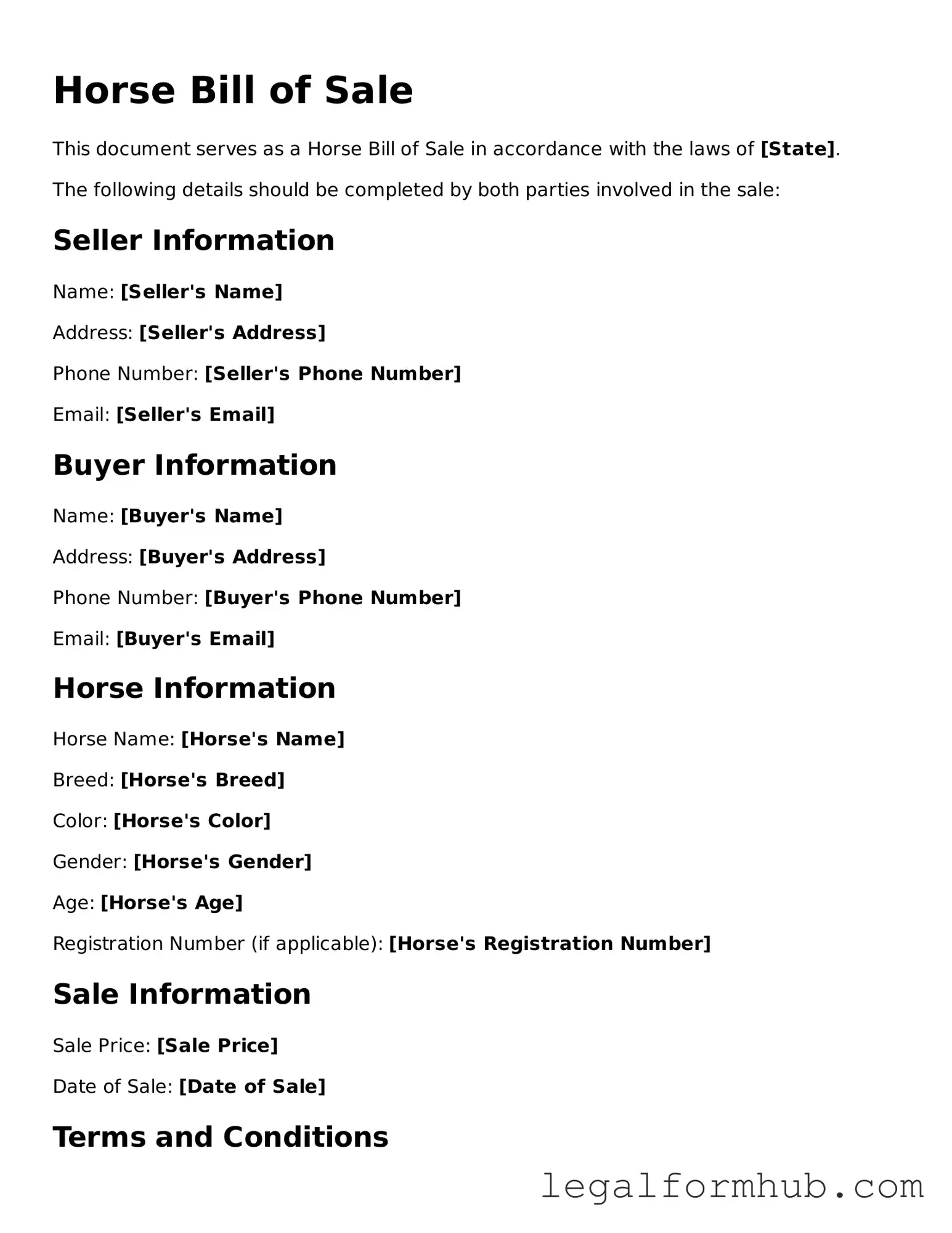The Horse Bill of Sale form shares similarities with a Vehicle Bill of Sale. Both documents serve as proof of ownership transfer from one party to another. A Vehicle Bill of Sale typically includes details such as the buyer's and seller's names, vehicle identification number (VIN), make, model, and year of the vehicle. Similarly, a Horse Bill of Sale includes the names of the buyer and seller, along with specific information about the horse, such as breed, age, and registration number, if applicable. Both forms protect the interests of both parties by documenting the transaction and providing a record for future reference.
Another document akin to the Horse Bill of Sale is the Pet Bill of Sale. This document is used when transferring ownership of pets, including dogs, cats, and other domesticated animals. Like the Horse Bill of Sale, it contains essential information about the animal, such as breed, age, and health status. The Pet Bill of Sale also includes the names and signatures of both the buyer and seller, ensuring that the transaction is legally recognized. Both documents aim to establish clear ownership and provide a formal record of the sale.
The Equipment Bill of Sale is another document that resembles the Horse Bill of Sale. This form is used when selling or buying equipment, such as farm machinery or tools. Similar to the Horse Bill of Sale, it contains details about the equipment being sold, including its condition, model, and serial number. Both documents require the identification of the buyer and seller, ensuring that the transaction is documented and legally binding. The Equipment Bill of Sale protects both parties by providing a clear record of the sale and its terms.
The Boat Bill of Sale is also comparable to the Horse Bill of Sale. This document is essential when transferring ownership of a boat or watercraft. Like the Horse Bill of Sale, it includes information about the buyer and seller, as well as specific details about the boat, such as its make, model, and hull identification number. Both forms serve to confirm the transfer of ownership and protect the rights of both parties involved in the transaction.
A Real Estate Purchase Agreement shares similarities with the Horse Bill of Sale in that both documents outline the terms of a sale. While the Horse Bill of Sale focuses on the transfer of a horse, the Real Estate Purchase Agreement deals with the sale of property. Each document includes the names of the parties involved, a description of the item being sold, and the agreed-upon price. Both documents serve as legal proof of the transaction, ensuring that the rights and responsibilities of both parties are clearly defined.
The Employment Verification Form is essential for ensuring the integrity of employment records, making it critical for various processes, including lending and hiring decisions. As employers or institutions seek confirmation of job history, the form plays a pivotal role in maintaining accuracy and transparency. For a streamlined experience in verifying employment details, you can access the necessary resources by visiting pdftemplates.info/.
Lastly, the Business Bill of Sale is similar to the Horse Bill of Sale in that it documents the transfer of ownership, but it pertains to the sale of a business rather than a horse. This document outlines the details of the business being sold, including assets, liabilities, and any included inventory. Like the Horse Bill of Sale, it requires the signatures of both the buyer and seller, ensuring that the transaction is legally recognized. Both documents serve to protect the interests of both parties by providing a formal record of the sale and its terms.
